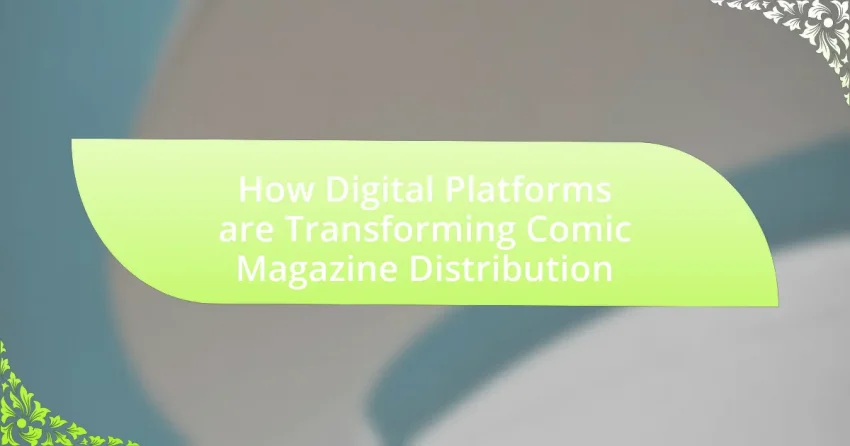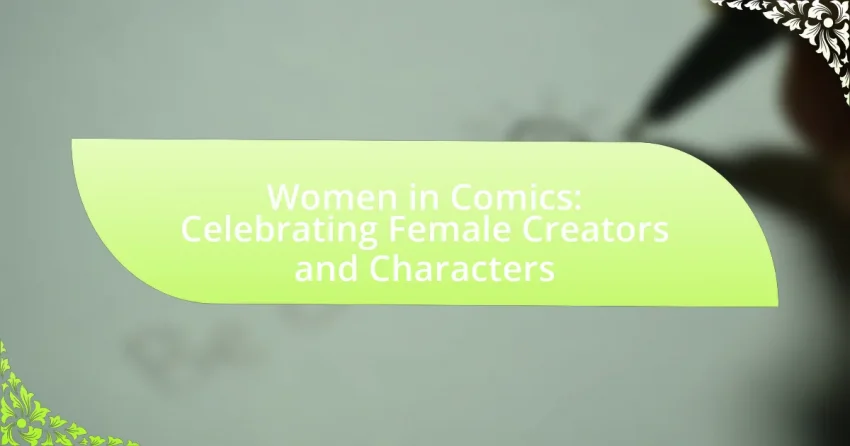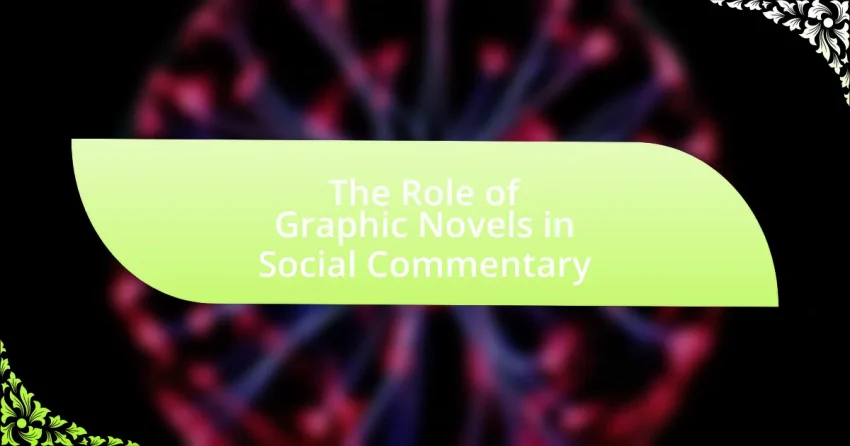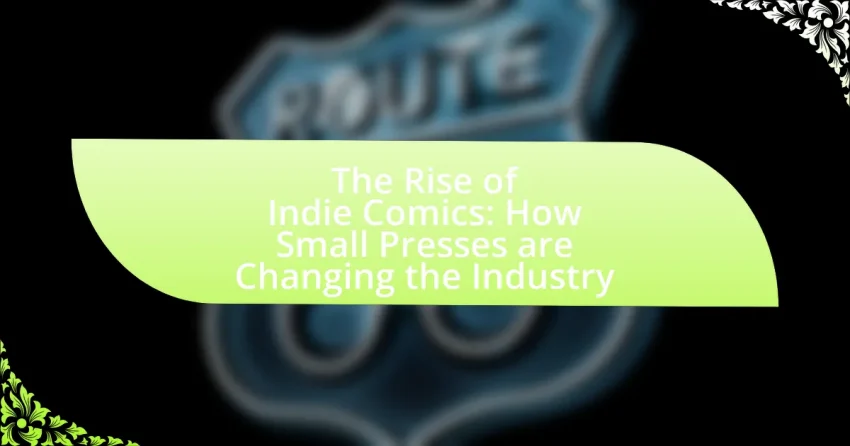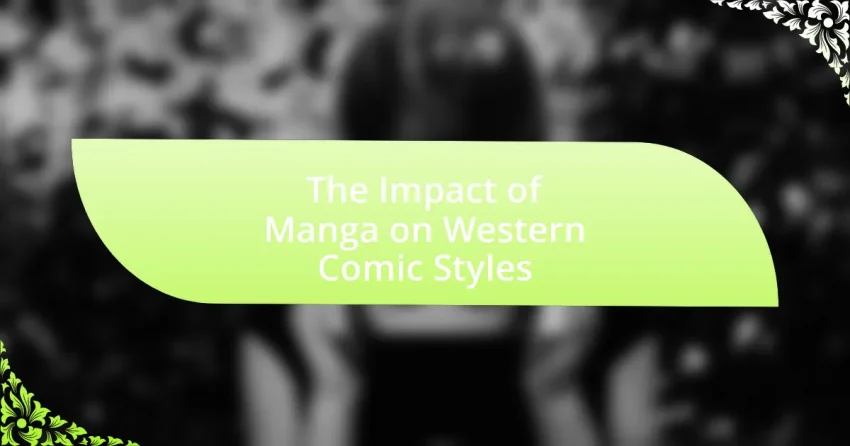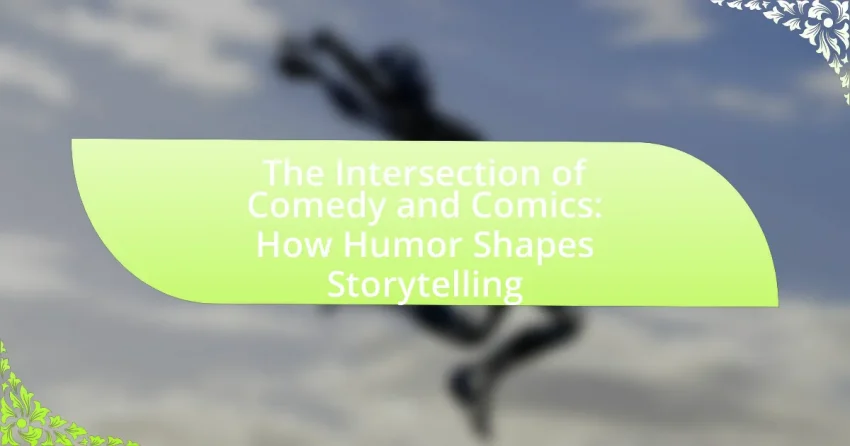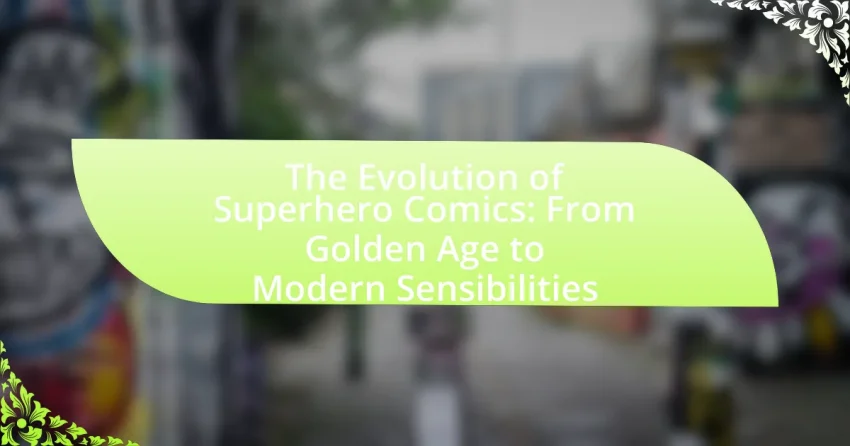Digital platforms are fundamentally transforming comic magazine distribution by providing creators with direct access to a global audience and reducing reliance on traditional print methods. Platforms such as ComiXology, Webtoon, and Tapas are reshaping the industry by enabling independent artists to publish and monetize their work digitally, thus enhancing accessibility for readers and fostering innovative…
Analyzing the Latest Trends in Graphic Novel Storytelling
The article analyzes the latest trends in graphic novel storytelling, highlighting the integration of diverse narratives, innovative visual styles, and the exploration of complex themes such as mental health and identity. It discusses the evolution of storytelling techniques, including non-linear narratives and multimedia elements, as well as the impact of visual elements on reader engagement….
An Inside Look at the Business of Comic Magazine Publishing
The article provides a detailed examination of the business of comic magazine publishing, focusing on its evolution, financial aspects, and the impact of consumer preferences. It outlines the industry’s historical development from the late 19th century to the present, highlighting key events such as the introduction of the Comics Code Authority and the rise of…
Exploring the Intersection of Comics and Social Justice Issues
The article explores the intersection of comics and social justice issues, highlighting how this medium addresses societal challenges, advocates for marginalized voices, and inspires activism. It discusses the historical context of comics in social justice, the effectiveness of visual storytelling in conveying complex themes, and the representation of diverse identities across various genres. Key themes…
Women in Comics: Celebrating Female Creators and Characters
The article focuses on the significance of women in comics, highlighting their contributions as creators and characters that diversify narratives and challenge gender stereotypes. It discusses the historical evolution of female characters, the impact of female creators on storytelling, and the importance of representation in shaping societal perceptions of gender roles. Key movements and milestones…
The Role of Graphic Novels in Social Commentary
Graphic novels play a significant role in social commentary by merging visual art and narrative to address complex societal issues such as identity, race, gender, and political themes. They engage diverse audiences through emotional and intellectual storytelling, making abstract concepts more accessible. Key elements like visual storytelling techniques, character development, and thematic depth enhance their…
The Rise of Indie Comics: How Small Presses are Changing the Industry
Indie comics, produced independently outside major publishing houses, are gaining prominence for their creative freedom and diverse storytelling. This article explores the significance of indie comics and small presses in the comic industry, highlighting their role in amplifying underrepresented voices and innovative narratives. It examines the differences between indie and mainstream comics, the unique themes…
The Impact of Manga on Western Comic Styles
The article examines the significant impact of manga on Western comic styles, highlighting how manga has introduced distinct visual techniques and narrative structures that have influenced Western creators since the late 1990s. Key aspects discussed include the adoption of dynamic panel layouts, exaggerated facial expressions, and character-driven storytelling, which have enriched the diversity of Western…
The Intersection of Comedy and Comics: How Humor Shapes Storytelling
The article explores the intersection of comedy and comics, highlighting how humor enhances storytelling through visual and verbal elements. It examines the interaction between comedy and comics in character development, plot progression, and reader engagement, emphasizing key comedic elements such as visual humor, timing, and situational irony. The piece also discusses various comedic styles, including…
The Evolution of Superhero Comics: From Golden Age to Modern Sensibilities
The article examines the evolution of superhero comics, tracing their development from the Golden Age in the late 1930s, marked by the debut of Superman, to the Modern Age characterized by complex narratives and diverse representation. It highlights key eras, including the Silver Age’s introduction of flawed heroes and the Bronze Age’s focus on social…
